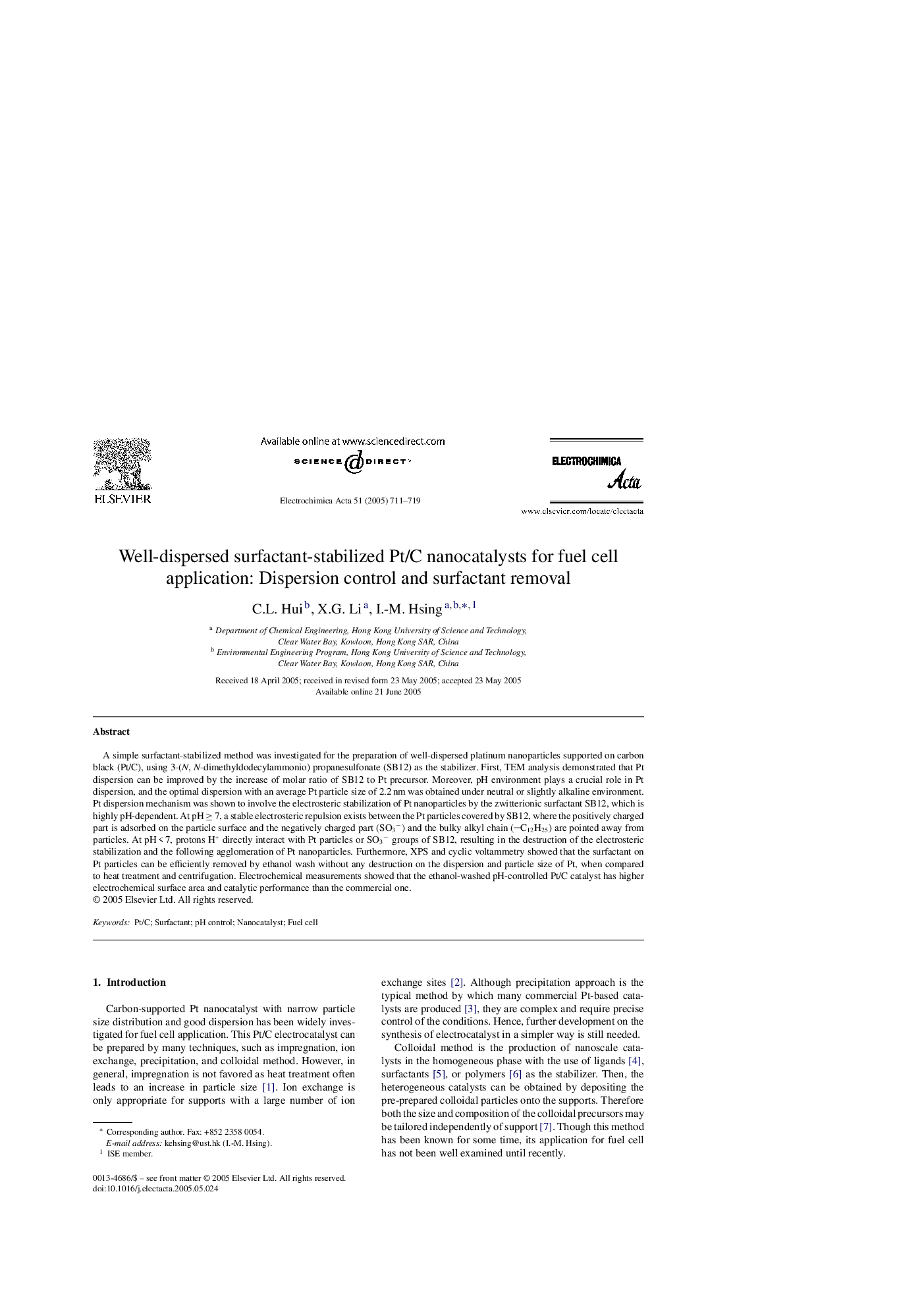| Article ID | Journal | Published Year | Pages | File Type |
|---|---|---|---|---|
| 10269287 | Electrochimica Acta | 2005 | 9 Pages |
Abstract
A simple surfactant-stabilized method was investigated for the preparation of well-dispersed platinum nanoparticles supported on carbon black (Pt/C), using 3-(N, N-dimethyldodecylammonio) propanesulfonate (SB12) as the stabilizer. First, TEM analysis demonstrated that Pt dispersion can be improved by the increase of molar ratio of SB12 to Pt precursor. Moreover, pH environment plays a crucial role in Pt dispersion, and the optimal dispersion with an average Pt particle size of 2.2 nm was obtained under neutral or slightly alkaline environment. Pt dispersion mechanism was shown to involve the electrosteric stabilization of Pt nanoparticles by the zwitterionic surfactant SB12, which is highly pH-dependent. At pH â¥Â 7, a stable electrosteric repulsion exists between the Pt particles covered by SB12, where the positively charged part is adsorbed on the particle surface and the negatively charged part (SO3â) and the bulky alkyl chain (C12H25) are pointed away from particles. At pH < 7, protons H+ directly interact with Pt particles or SO3â groups of SB12, resulting in the destruction of the electrosteric stabilization and the following agglomeration of Pt nanoparticles. Furthermore, XPS and cyclic voltammetry showed that the surfactant on Pt particles can be efficiently removed by ethanol wash without any destruction on the dispersion and particle size of Pt, when compared to heat treatment and centrifugation. Electrochemical measurements showed that the ethanol-washed pH-controlled Pt/C catalyst has higher electrochemical surface area and catalytic performance than the commercial one.
Related Topics
Physical Sciences and Engineering
Chemical Engineering
Chemical Engineering (General)
Authors
C.L. Hui, X.G. Li, I.-M. Hsing,
